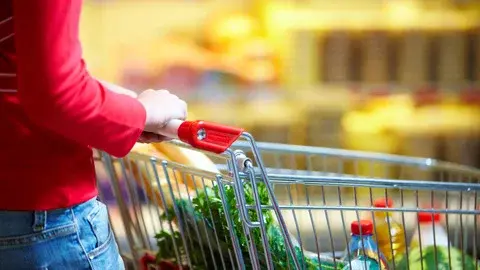Professor Kuhn, you have recently published a study together with Prof. Dr. Andreas Holzapfel from Hochschule Geisenheim University that deals with the special challenges faced by the food logistics industry during Easter and Christmas holidays. Is the industry also equipped to supply the population in the current corona pandemic?
Yes of course, supply is ensured. It just takes some time until the shelves are restocked. This sudden increase in demand for certain product groups and price segments, such as durum wheat products, canned foods, and hygiene products could not be anticipated by retailers. This is what distinguishes the current situation from usual holiday business (Christmas and Easter). Here, retailers are experienced because they know consumer behavior from the past years and can prepare accordingly.
Logistic processes are coordinated and adjusted in fine detail in order to be able to offer the customer (under normal circumstances) all the diverse products (approx. 50,000 different products in a normal grocery store) in high availability and, above all, also at acceptable prices. In case of short-term peaks in demand, as we are currently witnessing to an extreme extent, it might take some time for suppliers to deliver the products to the stores after having distributed them via the central and regional warehouses. A goods distribution center of a grocery store (Edeka, REWE, Kaufland, Real, dm-drogerie markt etc.) only has a limited daily capacity for commissioning and goods-in or goods-out and for transport of the products. If demand increases, refill orders from grocery stores must queue just as tourists at a ski lift, and this requires patience. However, the products are there, either at the delivery company or at a retailer’s distribution center. This means that we do not need to worry about supplies.
What are the special challenges for food logistics in the current situation? What efforts are being made behind the scenes?
Products for which demand is currently very high need to be distributed across all grocery stores fairly so that all regions and stores are taken into equal account. It must be avoided that individual markets do not receive durum wheat and/or hygiene products over weeks while others are oversupplied.
In general, central and regional warehouses in the retail industry are very important hubs in the flow of goods to the stores and must be kept in working condition by all means. This means that distribution centers are subject to very strict hygiene and safety precautions. Scenarios involving absences of employees due to illness or even closure of entire distribution centers must be simulated. Especially in the context of pandemic response plans, the question of which distribution centers could be replaced by other centers in case of emergency should be addressed.
In some places, goods are delivered to supermarkets on Sundays, however, this is not feasible for all stores because employees need to be present to receive the goods. This gets increasingly difficult with a growing spread of the pandemic in Germany. While other industries have to apply for short-time work, food trade currently has an increased demand for employees. Here as well, negotiations and preliminary discussions on temporary takeover/borrowing of logistics staff from other sectors are already underway.
Furthermore, the industry must generate prognoses on which groups of goods or products are actually consumed more when people have to stay home and which goods or products are merely deposited at home but not consumed. There are currently no empirical values in this respect. The fact that restaurants are closed in the evenings definitely leads to an increased food consumption at home.
Panic buying and aggressive behavior of impatient customers in supermarkets must be met in an adequate manner without compromising those customers who are patient and understanding. This is an additional burden for employees working in the grocery stores.
Are empty shelves a sign of scarcity?
In the current situation, empty shelves are no indicator for a long-term scarcity of certain goods, but rather a sign of an acute, short-term capacity shortage in production and logistics. It takes some time until shelves can be replenished. Some stores even only get deliveries once a week. But when the demand for a product that usually corresponds to the demand of a two-week period is raised within a day, it may lead to the fact that a shelf might only be stocked for half a day and empty for the next five days.
Do people still need to prepare for shortages?
Within the food industry, there will only be shortages for a few specific products that can easily be substituted by other products. Even for critical goods, such as disinfectant, I would expect that the situation eases in the medium term. There are no particular reasons for hoarding large quantities of goods that go beyond usual household provisions that should be kept at all times anyway.
How should we as customers behave in this special situation?
I think in this tense situation it is important to realize and acknowledge that employees in grocery markets and drugstores are currently fulfilling relevant services to ensure our supply with everyday goods. In an international comparison, this is happening in very efficient logistics systems in Germany. This realization helps us to understand that there is no need for panic buying, even if stores have temporarily run out of toilet paper. A respectful conduct in supermarkets certainly also involves keeping an appropriate distance to sales staff and other customers and ideally pay by card to reduce exchange of cash to a minimum.
Interview: Constantin Schulte Strathaus
Further information available at www.lebensmittellogistik.org

